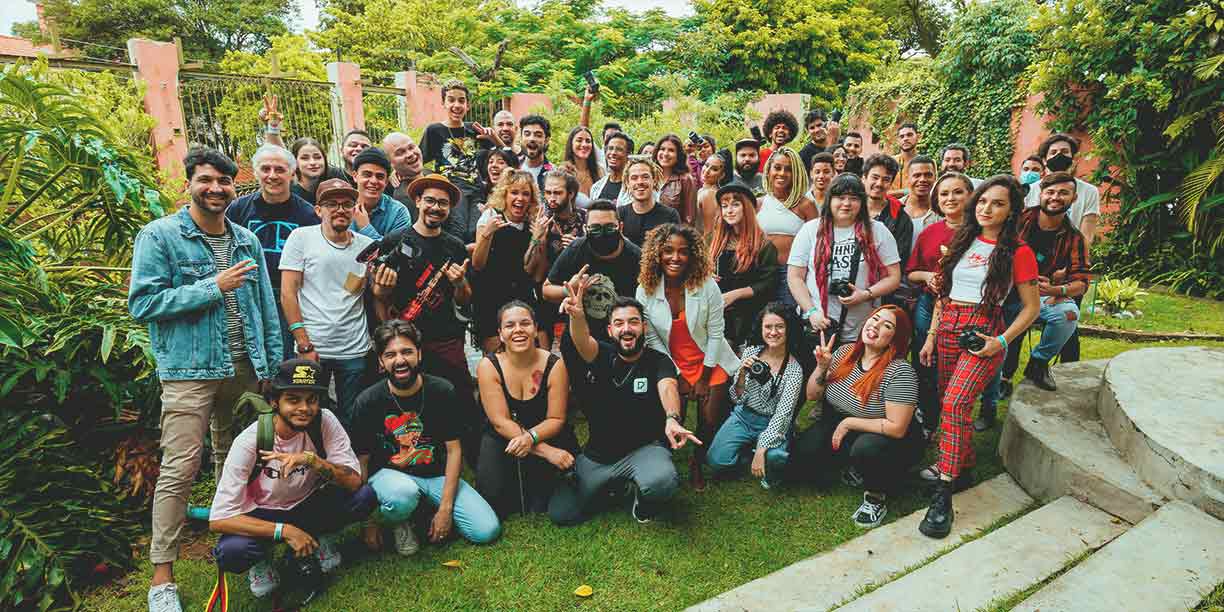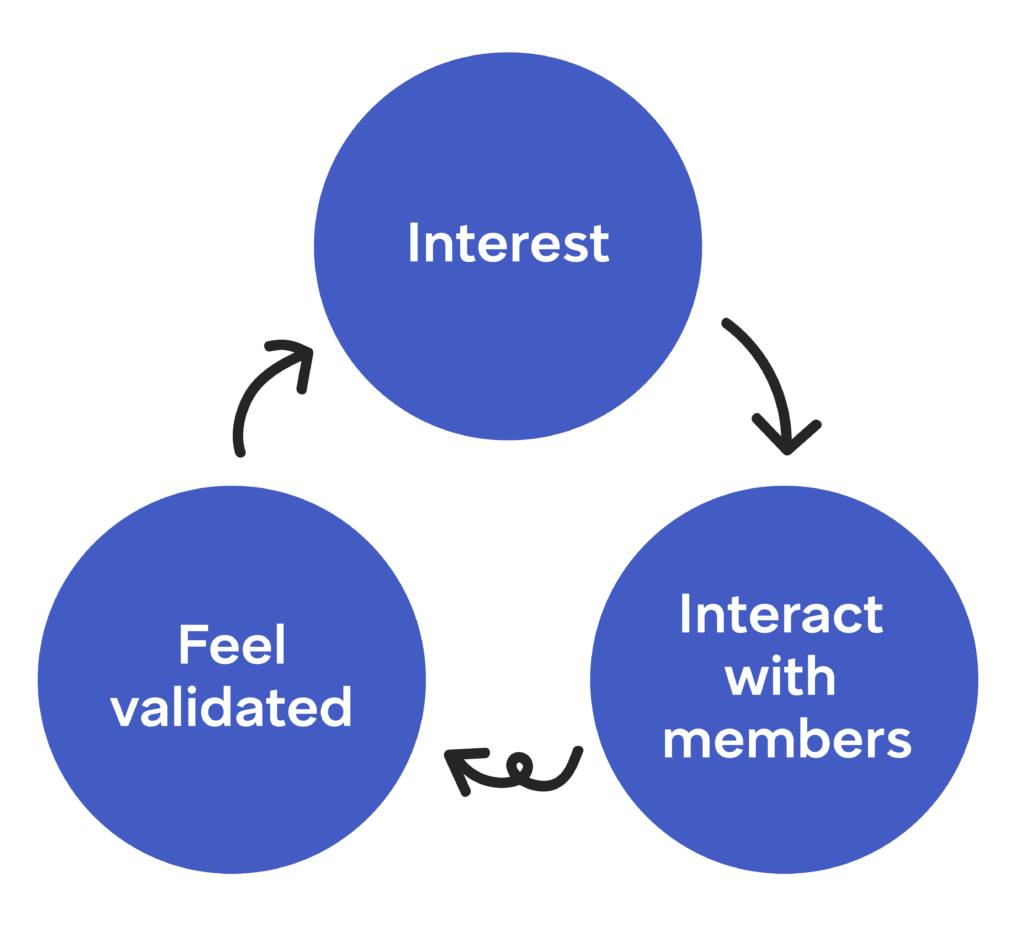The Power of Community: A Nonprofit’s Greatest Asset

This blog was written in collaboration with Katrina VanHuss, Chair and Founder of Turnkey For Good, and Otis Fulton, PhD, Vice President of Psychological Strategy.
“The Boston community.”
“The blood cancer community.”
“The Harley-Davidson community.”
Are these true communities, or are we simply using the term to describe where you live, what you battle, or what you ride? Is “community” just shorthand for saying, “These people share this attribute”? In many ways, that’s accurate. It’s how dictionaries often define the term.
However, from a social-psychology perspective, a community is much more than that. At its core, a community has two essential attributes:

- People share a common interest or belief.
- People have a way to communicate with each other.
That said, nonprofits must answer the question: How do I activate these two elements within my organization? Let’s dive in.
What does community mean to you?
But what if our current understanding of community is mistaken? What if we don’t really understand how it operates? How to create it? How to nurture it? What if we have been doing it wrong? What if I have been doing it wrong?
When we discuss nonprofit communities, we usually refer to the people on our contact lists. What if, instead, we reframe community as a system? Consider nonprofit events. We’ve perfected fundraising events over the decades, so why is there an emphasis on building community instead of hosting more and bigger event experiences?
Here’s the reason: Events are what people do. Communities are who people are. In other words, community is part of their identity.
Community drives identity-building, trust, and satisfaction—three fundamental elements people crave. By focusing on these elements, nonprofits can create deeper, more meaningful connections with their supporters.
Let’s explore how identity-building, trust, and satisfaction contribute to a thriving nonprofit community and how focusing on these can make a significant impact.
1. Identity-building
You’ve likely heard of cognitive dissonance—the discomfort felt when behavior doesn’t align with identity, values, and beliefs. People want to act in ways that are consistent with how they see themselves. When their identity aligns with your organization’s values, they’re much more likely to support your mission.
This is why identity-building is so powerful within a community. If a constituent strongly identifies as a champion for your cause, they’re likely to support your mission in various ways, such as donating, fundraising, volunteering, and advocating.
But how does community build identity?
Understanding the social-validation feedback loop
People gravitate toward groups that reflect their values, interests, or ideas. These affiliations significantly shape our self-perception, which is known as social identity in psychology.
People want to be activated and engaged. They want to solve problems together. It’s participation and hope that is the reason so many of you are fighting to create something better.
Most people can quickly identify several social identities, such as liberal, Republican, UVA alumni, animal rights advocate, electric vehicle enthusiast, Second Amendment defender, or constitutionalist.
We engage with people in a community who share our values or beliefs. If the group is a good fit, these interactions reinforce our identity. The more we engage, the more our identity gets validated, creating a social-validation feedback loop. This validation from others is highly rewarding.
These positive interactions then strengthen our identity, making us more likely to engage—and the cycle continues.

When community members validate your identity, it reassures you: “These people are like me. What I am doing is good.” This builds trust within the community, which extends to supporting shared values or ideas.
Building trust also requires opportunities for members to engage with each other. That’s why nonprofit communities need to be more than a collection of people with common beliefs or an email list. They must also have the means to communicate with each other.
Without this ability, there’s no true community.
2. Trust
In addition to identity-building, research indicates that people tend to behave more positively toward those they trust and like. Liking and trusting are closely linked.
However, trust can be challenging to define. Social psychologists describe it as the opposite of fear. It’s a positive emotion that feels good, and people often act based on their emotional states. For instance, many nonprofit messages aim to build empathy to encourage donations. Similarly, positive outcomes arise when people trust a nonprofit community.
We also know trust leads to action. Trust increases the likelihood of behavior that supports the community and its objectives.
How strong is the sense of trust in your nonprofit’s community? Consider this scenario:
Your volunteer director asks James, a returning donor, to sign up for next month’s volunteer opportunity. James is far more likely to say yes in a high-trust community, expecting an enjoyable experience. This illustrates how trust can drive action.
3. Satisfaction
With people now interacting with other community members, how can you motivate them to stay involved? To answer this question, let’s explore what social psychology teaches us about human motivation.
People are motivated to seek out and stay in satisfying relationships. To achieve a satisfying relationship, it must meet these three basic needs called the Trifecta of Satisfaction at Turnkey for Good:
- Autonomy (I am in charge of what I do, and I make meaningful decisions)
- Competence (I am effective in what I do)
- Relatedness (I have close, affectionate relationships with others)
Relatedness, at its core, is about community. Through your relationships, you feel part of something larger than yourself. Think about moments when you’ve experienced this—it’s immensely rewarding and satisfying.
Understanding these three basic needs also illuminates how we can sometimes hinder community-building. For instance, an egocentric organizational mindset can lead to behaviors that unintentionally impede community.
Consider how your organization treats its volunteers:
- Do they have the autonomy to accomplish tasks, or are they following a rigid playbook?
- Do they engage in meaningful work and have opportunities for growth, or are they limited to menial tasks?
While relatedness is crucial for building a supporter’s identity as a champion for your cause, autonomy and competence are equally vital for cementing the psychological connection.
Empowering supporters to fulfill their psychological needs
Let’s look at a nonprofit event as an example. It’s common for staff to handle all aspects of an event, from theme and site selection to logistics and messaging control. Meanwhile, constituents often tend to fundraising and attendance.
In this scenario, staff have full autonomy over decision-making, leaving constituents with limited opportunities to demonstrate competence (doing something well) and relatedness (connecting with others).
A more effective approach could involve staff recruiting a volunteer leadership group to make meaningful decisions. This could provide the nonprofit with opportunities to recognize constituents for their leadership, service, recruitment, and fundraising efforts. Additionally, the nonprofit could connect constituents before the event through collaborative event planning and asynchronous communication systems established by the staff.
The current approach may result from staff members’ desire for autonomy and control, especially when faced with performance metrics. However, by prioritizing the Trifecta of Satisfaction and focusing on community, we can design events that not only raise funds but also retain more participants and foster happiness.
Rather than prescribing rigid frameworks for engagement, we want to help nonprofits become facilitators. We need to relinquish full ownership over the experience to let our constituencies be our brand ambassadors and bring their communities along with them.
Why investing in community pays off
This blog focuses on the “why” rather than the “how to” of building community. While the return on investment for events is straightforward, measuring the impact of community-building is more nuanced, often seen in the lifetime value of each community member.
However, analyzing data can reveal compelling reasons to invest in community-building. Josh Birkholz, CEO of the nonprofit consultancy BWF, recently shared results from a study of their clients’ donors and fundraisers. The study found that when donors are friends with other donors, their lifetime value increases between four and five times. Additionally, these supporters show deeper loyalty in times of economic uncertainty.
We cannot underscore the value of community enough. Investing in its strength and sustainability not only fuels loyalty but also fosters a sense of belonging that transcends organizational boundaries.
Copy Editor: Ayanna Julien

A deep dive into AI's influence on community



